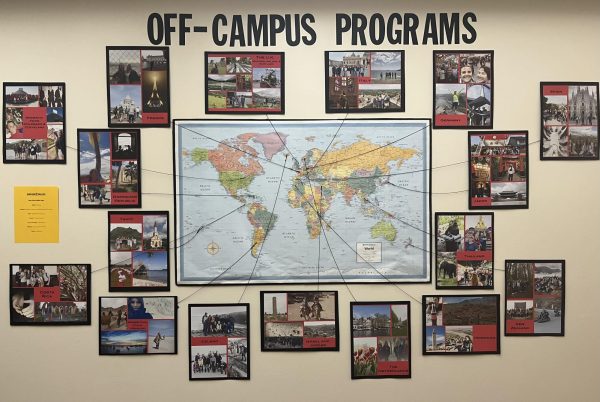Video Report: Students struggle when developing healthy eating options
February 3, 2015
One month down, eleven more to go. With gyms and fitness centers experiencing a rise in memberships due to New Years’ Resolutions, there’s another side of healthy living that tends to be overshadowed: nutrition.
It’s no secret college students develop poor eating habits, but what’s to blame?
Kyle Jensen, junior at Simpson College, said a lack of money and stress is the cause for poor eating habits.
With college tuition rising higher than ever before, students find solace in affordable, yet dangerous junk food. While The Simpsonian reported earlier that efforts to keep Simpson Fitness remain alive, Nicci Whalen, associate professor of sport science and health education, said it’s not just about exercise.
“We know that, honestly, if you were going to choose one or the other, we would see typically more benefit from nutrition,” Whalen said. “But, we can see a huge plus and augmented results through exercise and healthier eating, and it’s so funny because one drives the other.”
Are college students really limited to ramen noodles and pizza as the last resort? Not necessarily.
According to the U.S. Department of Health and Human Services, a cumulative $5.5 billion was spent on alcoholic beverages — breaking down to $50 per student per month.
“I feel like there’s definitely some money put aside or designated for alcohol,” Jensen said.
In addressing this problem, Whalen said, “I constantly, constantly get told, ‘I can’t afford good foods, I can’t afford fruits and vegetables.’”
But, that might just be an excuse.
“You can afford them. You’re making a choice to spend the majority of your money on alcohol instead of some fresh foods, so I just throw that one out the window,” Whalen said.
She notes that alcohol gives energy, but doesn’t contain nutritional content, given that it’s simply empty calories. Alcohol affects sleep and causes dehydration, while impairing judgment and losing motivation.
She offers smoothies as an appropriate and realistic adjustment to one’s diet.
“I think smoothies are going to be the easiest for you to incorporate a lot of vegetables, a lot of fruits, and maybe some chia seeds, or flax seeds, or some other type of seed into your diet. And it can be inexpensive, if done properly,” Whalen said.
By habitually eating healthful foods, rather than “spur of the moment” diet, Whalen explains we are more inclined to work out, which leads better sleep cycles and more motivation. And the cycle begins with what our bodies consume.
Laina Sullivan, junior at Simpson College, is currently taking Whalen’s course, General Nutrition, and says, “I buy my own groceries, and I’m a poor college student so I spend $150 a month.”
“I’ve only been in Nutrition for two weeks, and I already want to change my eating habits just knowing the foods I eat are so bad and there are better options for me,” Sullivan said.
Denise Boozell, R.D. L.D, a registered and licensed dietician with Hy-Vee, said, “What I suggest for people would be to shop the weekly sales… Pick fruits and vegetables that are in season.”
“Regarding some of those packaged items, multigrain pasta is very inexpensive,” Boozell said. She suggests making homemade macaroni and cheese using multigrain pasta instead of packaged brands, and using brown rice recipes in lieu of ramen noodles.
“I think the key is planning and making a list so when you go the grocery store, you’re actually buying things on your list,” Boozell said.
She encourages self-proclaimed “poor college students” to drink water (because it’s free), and to evaluate purchases on sugary beverages — especially pop and flavored coffees. She also advises to choose whole foods such as fruits, vegetables and lean meats as opposed to packaged and processed food items.
For more health tips throughout the year, Simpson students have access to Student Health 101, an online wellness magazine.















